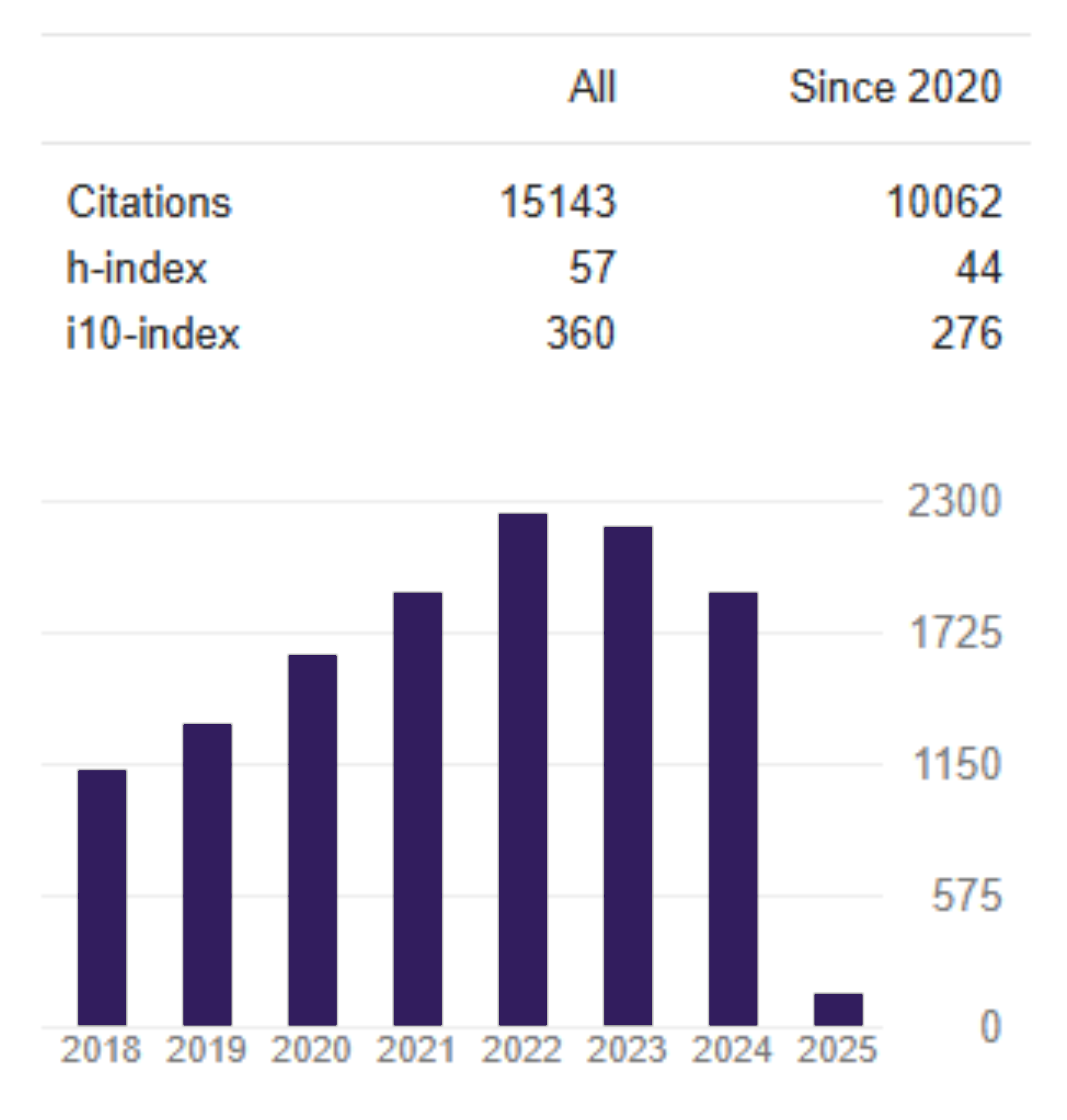The Role of Good Corporate Governance to Fraud Prevention: An analysis based on the Fraud Pentagon
DOI:
https://doi.org/10.26905/jkdp.v25i2.5554Keywords:
Fraud, Pressure, Opportunity, Rationalization, Competence, Arrogance, Good Corporate GovernanceAbstract
This study aims to analyze the relationship between the causes of fraud, good corporate governance, and fraud. This study is a descriptive study tested using logistic regression analysis. This study used 27 samples of banking companies from 44 banking companies during 2016-2019, so there were 108 observations. This analysis shows that competence and opportunity have a significant positive effect on fraud, but rationalization, pressure, and arrogance have no effect on fraud. This research also revealed that good corporate governance could minimize the influence of opportunity and rationalization on fraud, but good corporate governance strengthens the competence Impact on Fraud. Meanwhile, pressure and arrogance are not moderated by good corporate governance.
Â
Downloads
References
Abdulllahi, R., & Mansor, N. (2015). Fraud Triangle Theory and Fraud Diamond Theory. Understanding the Covergent and Divergent For Future. 5(4), 38–45.
ACFE. (2016). Report To the Nations On Occupational Fraud and Abuse 2016. ACFE Report, 1–92.
ACFE. (2019). Survei Fraud Indonesia Chapter #111. Auditor Essentials, 7–10.
Apriliana, S., & Agustina, L. (2017). The Analysis of Fraudulent Financial Reporting Determinant through Fraud Pentagon Approach. Jurnal Dinamika Akuntansi, 9(2), 154–165. https://doi.org/10.15294/jda.v7i1.4036
Dorminey, J., Scott Fleming, A., Kranacher, M. J., & Riley, R. A. (2012). The evolution of fraud theory. Issues in Accounting Education, 27(2), 555–579. https://doi.org/10.2308/iace-50131
Effendi, A. (2018). The Power of Good Corporate Governance Teori dan Implementasi (2nd ed.). Salemba Empat.
Eisenhardt, K. M. (1989). Agency Theory: An Assessment and Review. Cardiology, 14(1), 57–74. https://doi.org/10.1159/000169659
Harmono. (2018). Manajemen Keuangan Berbasis Balanced Scorecard. Bumi Aksara.
Horwath, C. (2011). Why the Fraud Triangle is No Longer Enough. Www.Crowe.Com.
IICPA (Indonesian Institute of Certified Public Accountants). (2014). SA 240.pdf.
Jensen, M. C., & Meckling, W. H. (1976). THEORY OF THE FIRM: MANAGERIAL BEHAVIOR, AGENCY COSTS AND OWNERSHIP STRUCTURE. Human Relations, 3, 305–360. https://doi.org/10.1177/0018726718812602
Lastanti, H. S. (2020). Role of Audit Committee in the Fraud Pentagon and Financial Statement Fraud. International Journal of Contemporary Accounting, 2(1), 77. https://doi.org/10.25105/ijca.v2i1.7163
Manurung, D. T. H., & Hardika, A. L. (2015). Analysis of factors that influence financial statement fraud in the perspective fraud diamond: Empirical study on banking companies listed on the Indonesia Stock Exchange year 2012 to 2014. International Conference on Accounting Studies (ICAS), August. www.icas.my
Nasir, N. A. B. M., Ali, M. J., & Ahmed, K. (2019). Corporate governance, board ethnicity and financial statement fraud: evidence from Malaysia. Accounting Research Journal, 32(3), 514–531. https://doi.org/10.1108/ARJ-02-2018-0024
OJK. (2019). Salinan Peraturan Otoritas Jasa Keuangan Republik Indonesia Nomor 39 Pojk.03 2019. https://www.ojk.go.id/id/regulasi/Pages/Penerapan-Strategi-Anti-Fraud-Bagi-Bank-Umum.aspx
Otoritas Jasa Keuangan. (2017a). Peraturan Otoritas Jasa Keuangan Nomor 13/POJK.03/2017 tentang Penggunaan Jasa Akuntan Publik dan Kantor Akuntan Publik Dalam Kegiatan Jasa Keuangan. Peraturan Otoritas Jasa Keuangan Nomor 13/POJK.03/2017 Tentang Penggunaan Jasa Akuntan Publik Dan Kantor Akuntan Publik Dalam Kegiatan Jasa Keuangan, 1–63.
Otoritas Jasa Keuangan. (2017b). Surat Edaran Otoritas Jasa Keuangan No 13/SEOJK.03/2017 tentang Penerapan Tata Kelola Bagi Bank Umum. Surat Edaran Otoritas Jasa Keuangan.
Ozcelik, H. (2020). An Analysis of Fraudulent Financial Reporting Using the Fraud Diamond Theory Perspective: An Empirical Study on the Manufacturing Sector Companies Listed on the Borsa Istanbul. 102, 131–153. https://doi.org/10.1108/s1569-375920200000102012
Pamungkas, I. D., Ghozali, I., Achmad, T., Khaddafi, M., & Hidayah, R. (2018). Corporate governance mechanisms in preventing accounting fraud: A study of fraud pentagon model. Journal of Applied Economic Sciences, 13(2), 549–560.
Scott, W. R. (2015). Financial Accounting Theory. Seventh Edition. Pearson Prentice Hall: Toronto.
Shi, W., Connelly, B. L., & Hoskisson, R. E. (2017). EXTERNAL CORPORATE GOVERNANCE AND FINANCIAL FRAUD: COGNITIVE EVALUATION THEORY INSIGHTS ON AGENCY THEORY PRESCRIPTIONS. Business, 38(April 2016), 1268–1286. https://doi.org/10.1002/smj
Skousen, C. J., Smith, K. R., & Wright, C. J. (2015). Detecting and Predicting Financial Statement Fraud: The Effectiveness of The Fraud Triangle and SAS No. 99 in Corporate Governance and Firm Performance. In International Journal of Quality & Reliability Management (Vol. 13).
Sulistyanto, S. (2018). Manajemen Laba: Teori dan Model Empiris. PT Grasindo.
Suyanto, S. (2009). Fraudulent Financial Statement: Evidence from Statement on Auditing Standard No. 99. Gadjah Mada International Journal of Business, 11(1), 117. https://doi.org/10.22146/gamaijb.5539
Tuanakota, T. M. (2014). Mendeteksi Manipulasi Laporan Keuangan. Salemba Empat.
Tuanakota, T. M. (2015). Audit Kontemporer. Salemba Empat.
Utami, I., Wijono, S., Noviyanti, S., & Mohamed, N. (2019). Fraud diamond, Machiavellianism and fraud intention. International Journal of Ethics and Systems, 35(4), 531–544. https://doi.org/10.1108/IJOES-02-2019-0042
Wolfe, B. D. T., & Hermanson, D. R. (2014). Print The Fraud Diamond : Considering the Four Elements of Fraud. 12(Exhibit 1), 1–5.
Yang, D., Jiao, H., & Buckland, R. (2017). The determinants of financial fraud in Chinese firms: Does corporate governance as an institutional innovation matter? Technological Forecasting and Social Change, 125(August 2015), 309–320. https://doi.org/10.1016/j.techfore.2017.06.035
Yendrawati, R., Aulia, H., & Prabowo, H. Y. (2019). Detecting the Likelihood of Fraudulent Financial Reporting: an Analysis of Fraud Diamond. Asia-Pacific Management Accounting Journal, 14(1), 43–69.
Yusof, K. M. (2016). Fraudulent Financial Reporting : An Application of Fraud Models to Malaysian Public Listed Companies Being a Thesis submitted for the Degree of Doctor of Philosophy in the University of Hull by Khairusany Mohamed Yusof B . Acc ( Honours ), Universiti Sain. August, 1–430.
Zarkasyi, W. (2018). Good Corporate Governance Pada Badan Usaha Manufaktur, Perbankan, dan Jasa Keuangan Lainnya. Alfabeta.
Downloads
Published
Issue
Section
License

This work is licensed under a Creative Commons Attribution-ShareAlike 4.0 International License.



